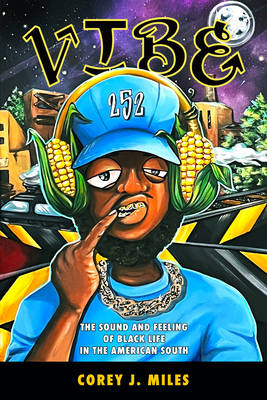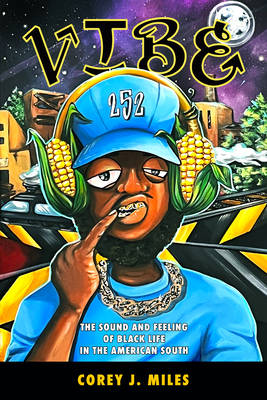
Onze Vivlio e-readers ondervinden momenteel synchronisatieproblemen. We doen er alles aan om dit zo snel mogelijk op te lossen. Onze excuses voor het ongemak!
- Afhalen na 1 uur in een winkel met voorraad
- Gratis thuislevering in België vanaf € 30
- Ruim aanbod met 7 miljoen producten
Onze Vivlio e-readers ondervinden momenteel synchronisatieproblemen. We doen er alles aan om dit zo snel mogelijk op te lossen. Onze excuses voor het ongemak!
- Afhalen na 1 uur in een winkel met voorraad
- Gratis thuislevering in België vanaf € 30
- Ruim aanbod met 7 miljoen producten
Zoeken
€ 114,95
+ 229 punten
Uitvoering
Omschrijving
Where exactly does the South begin and end? Current maps are too rigid to account for the ways Black people have built the South while being simultaneously excluded from it. Drawing from the different ways Black artists in the 2-5-2 area code in North Carolina use "vibe" as a mode of knowing and communication, author Corey J. Miles illustrates how Black feeling and unfeeling offer entry points into the contemporary South that challenge static and monolithic notions of the region. Placing the local artists in conversation with other southern cultural creators such as 2 Chainz, Rod Wave, and Rapsody, these ethnographic narratives demonstrate that there are multiple Souths, with overlapping and distinct commitments to working through pain, sound, and belonging. In Vibe: The Sound and Feeling of Black Life in the American South, Miles narrates how southern Black sound, feeling, and being is constantly policed, surveilled, and criminalized. In doing so, he re-narrates the region as the "carceral South," to capture the ways people in the South and beyond can feel the emotional weight of the criminalization of Blackness. Pain music, a subgenre of trap music, is used to take the listener to moments of violence to allow them to hear the desires, anger, and silences that bind Black life in community. Through conceptions of ratchet, hood, and ghetto, Black artists turn away from respectable images and unmap the South. In trap music, they move the South to a space where multiple modes of being find respect and care.
Specificaties
Betrokkenen
- Auteur(s):
- Uitgeverij:
Inhoud
- Aantal bladzijden:
- 152
- Taal:
- Engels
- Reeks:
Eigenschappen
- Productcode (EAN):
- 9781496847287
- Verschijningsdatum:
- 27/11/2023
- Uitvoering:
- Hardcover
- Formaat:
- Genaaid
- Afmetingen:
- 152 mm x 229 mm
- Gewicht:
- 394 g

Alleen bij Standaard Boekhandel
+ 229 punten op je klantenkaart van Standaard Boekhandel
Beoordelingen
We publiceren alleen reviews die voldoen aan de voorwaarden voor reviews. Bekijk onze voorwaarden voor reviews.











